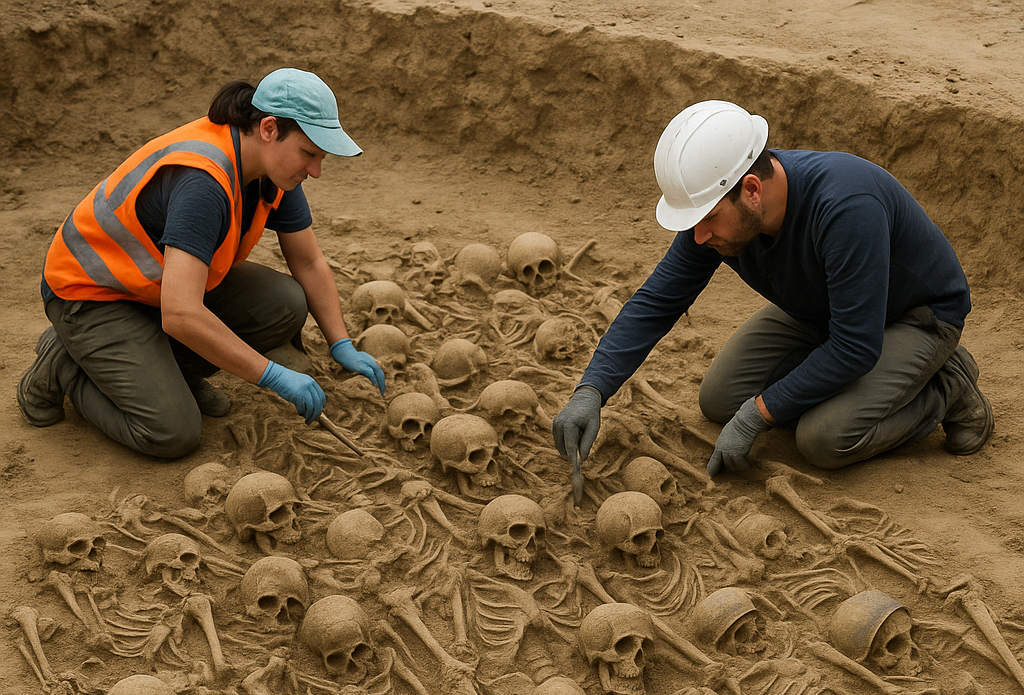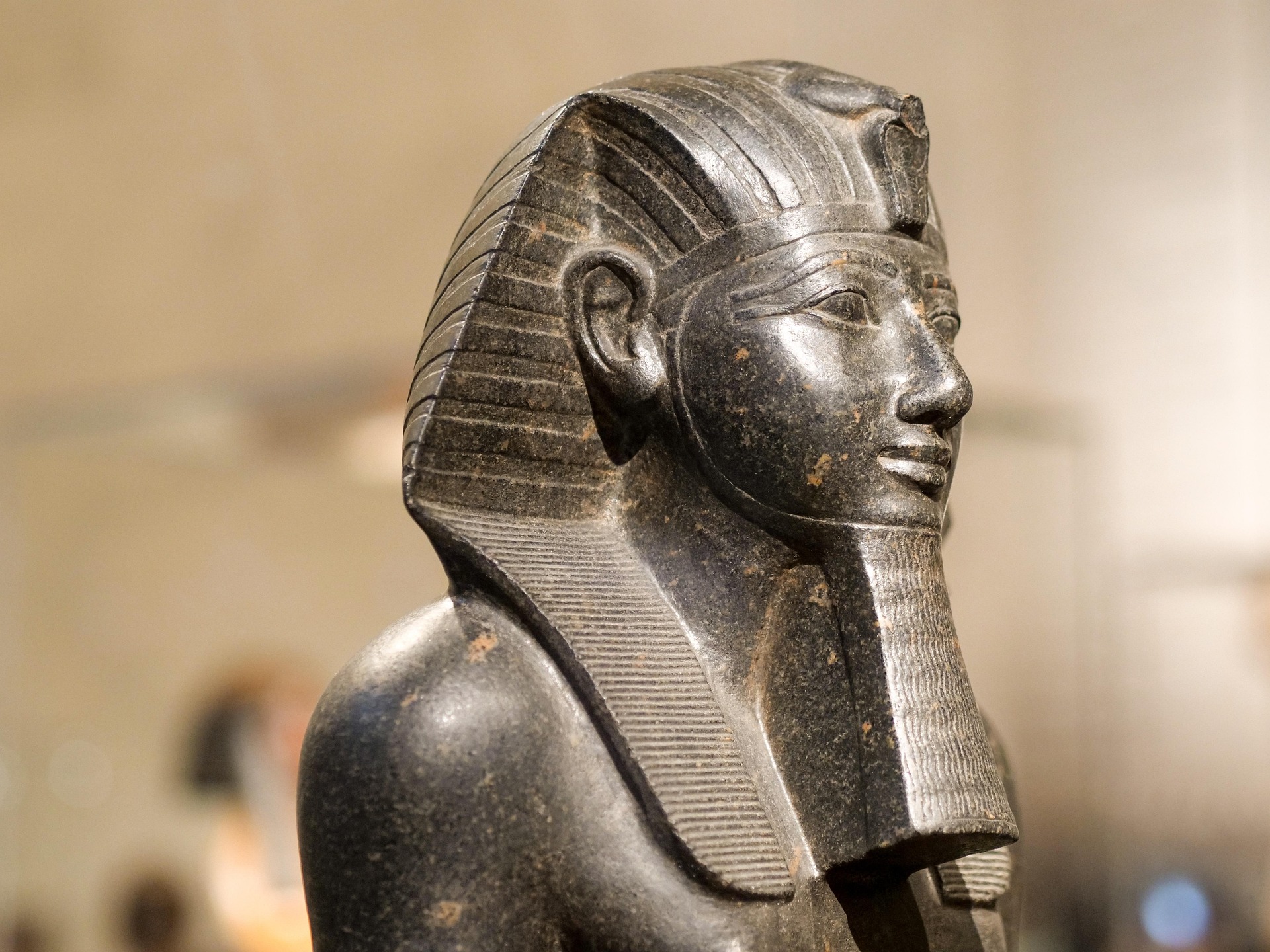Buried beneath a soccer field in Vienna’s Simmering district, archaeologists have uncovered a chilling testament to the violence of Rome’s northern frontier.
A mass grave, hidden for nearly two thousand years, has brought to light a forgotten slaughter of Roman soldiers — and it’s already rewriting parts of Central Europe’s ancient history.
A hurried grave for Rome’s young warriors
Discovered during construction work in October 2024, the site revealed the remains of at least 129 individuals, though experts believe the true number may reach 150. All were young men, between 20 and 30 years old, once healthy, now stacked carelessly atop one another in a pit.
Analysis of the bones leaves little room for doubt: these men died violently. Sword slashes across ribs and skulls, lance punctures through spines, and crushing blows consistent with blunt-force trauma tell the story of a battle that ended in chaos. No signs of formal burial rites were found — no urns, no cremation pyres — just a mass of broken bodies, hastily dumped and forgotten.
Artifacts scattered among the dead confirmed their identity. Pieces of scale armor, iron nails from Roman caligae boots, helmet fragments, and a dagger adorned with silver inlays surfaced as the excavation deepened. Radiocarbon dating and the style of military equipment place the battle sometime between 80 and 130 A.D., during one of the Roman Empire’s most precarious eras along the Danube River.
Echoes of a lost campaign
The location is telling. Vindobona — the Roman fort that eventually became Vienna — lies nearby. Historians have long suspected that the region saw brutal fighting during Emperor Domitian’s Danube campaigns (86–96 A.D.), when Roman forces pushed into the territories of fiercely resistant Germanic tribes. Now, physical evidence backs those accounts.
But the manner of the burial raises bigger questions about what happened here. Rome took great pride in its military rites; even in defeat, commanders often prioritized recovering their dead for proper cremation.
The disorder at Simmering hints at something different: a rout so sudden, or a defeat so overwhelming, that even these traditions crumbled under pressure.
“This isn’t how the Roman army typically treated its own,” one lead archaeologist involved with the dig noted. “Something went catastrophically wrong.”
Were these soldiers ambushed? Was Vindobona itself under siege? Or was this force an isolated detachment, crushed far from reinforcements?
For now, the answers remain buried within the bones — but isotope testing and DNA analysis are underway to trace where these soldiers came from. Results could reveal whether they were citizen legionaries from Italy, auxiliary troops recruited from local tribes, or a mixed force defending Rome’s northern wall.
Shifting the story of Rome in Central Europe
The Simmering discovery is unprecedented: no comparable Roman battlefield grave has ever been found in Central Europe.
Until now, the wars Rome fought in these regions have been known largely through scattered accounts and imperial propaganda. This mass grave offers tangible proof of how bloody and desperate those border conflicts could be — and how even the world’s most formidable army could suffer devastating losses beyond the empire’s core.
As researchers continue their work, the grave will likely become a key piece in understanding the fragile reality of Rome’s frontiers. It may even challenge the long-standing image of Rome as an unstoppable force north of the Danube.
One thing is already clear: the empire’s borders were not just lines on a map — they were soaked with the blood of young men who fought, died, and, until now, were forgotten.





